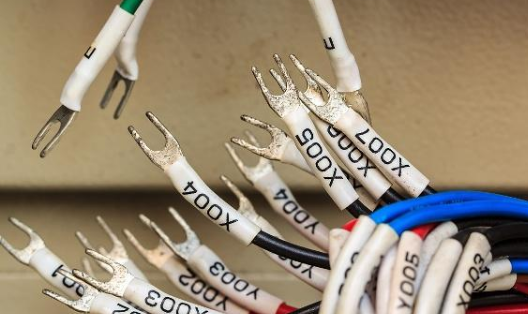What are the termination methods for electrical connectors?
Classification of termination methods:
1. Welding: The most common welding is soldering. The most important thing for a solder connection is that metal continuity should form between the solder and the surface being soldered.
2. Splicing: Splicing is the direct winding of the wire on the angular contact winding column.
3. Screw connection: The screw connection is a connection method using screw terminal blocks.
4. Crimping: Crimping is a technique for compressing and displacing metal within specified limits and connecting wires to contact pairs. A good crimp connection can produce a mutual melt flow of the metal, so that the conductor and the contact pair are deformed symmetrically. This connection is similar to a cold welding connection, which can obtain better mechanical strength and electrical continuity, and it can withstand more severe environmental conditions. . At present, it is generally believed that the correct crimp connection is better than soldering, especially in high current applications, crimping must be used. When crimping, special crimping pliers or automatic or semi-automatic crimping machines must be used. According to the cross section of the wire, the correct pair of wire barrels should be selected. Note that the crimp connection is a permanent connection and can only be used once.
5. Piercing connection: Piercing connection is also called insulation displacement connection. It is not necessary to peel off the insulation layer of the cable during connection. The tip of the U-shaped contact spring of the connector penetrates into the insulation layer to make the conductor of the cable slip. Into the groove of the contact spring and is clamped, so that a tight electrical connection is formed between the cable conductor and the connector spring.

The connection made by crimping technology between one or more wires and contacts of any shape. The crimp connection has the following advantages:
(1) No solder joint required;
(2) Can use full-brake or half-brake crimping machine, or manual tools for processing;
(3) Welding temperature and welding oxidation that did not damage the elasticity of the contact;
(4) Electrical and mechanical characteristics are reproducible.
(5) No heavy metals and solvent gases harmful to human body;
(6) The conductor's flexibility can be maintained after crimp connection;
(7) is a processing method for efficient connection of various production scales;
(8) Scorching, discoloration and overheating of non-conductor insulation layer;
To obtain a good electrical connection, there must be a correct fit between the cross-section deformation of the stamper, the crimping cylinder and the conductor. A proper crimping tool and a good crimping process are required.
Stripping requirements: In order to obtain a good and reliable crimp connection, the wire stripping must be correct
(1) Stripping length: It depends on the type and size of the crimping cylinder used: stripping length = crimping cylinder length + 1mm (cross-sectional area ≤ 1 mm2); stripping length = crimping cylinder length + 2mm (1
(2) The stripped stranded wire is not damaged: for example, it is broken individually or completely. It depends on the depth of the blade of the stripping tool, and its depth is determined according to the diameter of the conductor.
(3) The twist and twist of the twisted wire should be correct: if the twist and twist of the wire has been disturbed, you can twist it slightly along the twisting direction of the core to restore it.
(4) The stripped part of the wire should be clean and free of insulation residue.
The wire harness of the crimp contact of the connector should not exert tension on the embedded contact due to its own weight, and this tension will tilt the connector contact. This inclination has an impact on the electrical continuity of the contact during vibration, shock, and collision, and in severe cases will cause damage to the contacts of the two mating connectors. Therefore, the cable clamp of the connector must be installed correctly, that is, the wire harness of the crimp contactor should be bent directly at the contact end of the connector, and there should be no mechanical stress in the lateral and longitudinal directions of the mating contact.
After inserting the crimped ferrule into the connector device, the operator should clear the wires of the wire harness. When installing the cable clamp, ensure that the wire harness inside the connector has a certain reserved arc and must not be tight. The tightness of the cable clamp should be appropriate, and the cable should not be loose, and the wire harness should not be damaged. In addition, when mating and disconnecting the connector, in order to avoid stress on the embedded contacts, the connector should be mated and disconnected in the axial direction without pushing or pulling the wire harness.
If you want to know more, our website has product specifications for the electrical connectors, you can go to ALLICDATA ELECTRONICS LIMITED to get more information

